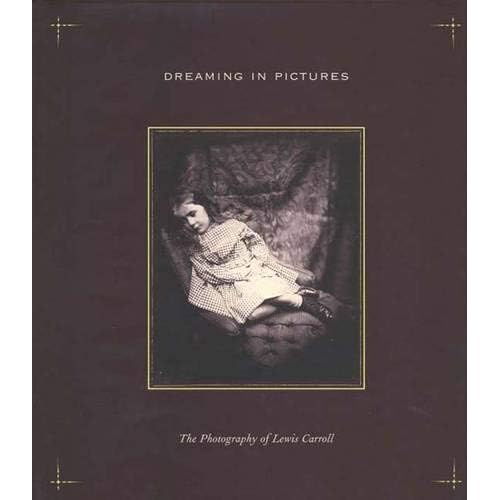Dreaming in Pictures: The Photography of Lewis Carroll
Category: Books,Arts & Photography,Photography & Video
Dreaming in Pictures: The Photography of Lewis Carroll Details
From Library Journal Published in conjunction with an exhibit that will travel from San Francisco to Houston, New York, and Chicago through January 2004, this volume features the photographic work of the beloved author of Alice's Adventures in Wonderland. Many of Lewis Carroll's photographs are of young girls he knew, often posed in costume with elaborate scenery and props that convey a sense of fantasy similar to that portrayed in his fiction. Curator of photography at the San Francisco Museum of Modern Art, Nickel focuses on the subject matter of Carroll's photographs and how it relates to the Victorian preoccupation with symbolism in art. He also discusses some previous interpretations of Carroll's work, including speculations about Carroll's personal relationships with the girls in his pictures. This volume is most suitable as a supplement to either of two other books recently published on Carroll's photographs: Roger Taylor and Edward Wakeling's Lewis Carroll: Photographer, a highly detailed overview of Carroll's life as a photographer, suitable for academic libraries; and Morton Cohen's Reflections in a Looking Glass, a solid introduction to Carroll's photography for public libraries. With thoughtful essays and high-quality reproductions, Nickel's book is also recommended for academic or larger public libraries.Eric Linderman, East Cleveland P.L., OHCopyright 2002 Reed Business Information, Inc. Read more From Booklist Nickel's introduction to this splendid album of Lewis Carroll's photographs sports one factual howler (he identifies the king, James V, in Scott's Lady of the Lake, as English) and some poor and illogical wordings. But his persuasive explication of Carroll's photography and revisionist assessment of Carroll's character make up for such shortcomings. He says Carroll's Victorian circle saw more than met the eye in his pictures, filling in cultural resonance and even physical detail from their knowledge of philosophy, literature, and history. Performing a kind of visual Platonism, they recognized in a child in a makeshift costume before a backdrop that doesn't cover the wall behind it an emblem of a great person, incident, sentiment, or all three at once. Appreciation today suffers from the modernist assumption that a photograph represents material reality only. Besides reading the pictures incorrectly, modern eyes misconstrue Carroll's personality. Carroll was fond of little girls, Nickel says, but the photos and his diaries demonstrate equal liking, equally nonsexual, for boys and other adults. A breath-of-fresh-air of a book. Ray OlsonCopyright © American Library Association. All rights reserved Read more From the Publisher Published in association with the San Francisco Museum of Modern Art Read more About the Author Douglas R. Nickel is curator of photography at the San Francisco Museum of Modern Art. Read more

Reviews
This book was meant to accompany the exhibit of the photography of Lewis Carroll that visited the San Francisco Museum of Art in 2002, Houston in 2003, and the Art Institute of Chicago in 2004. Each photo has an attached discussion. The introduction to the collection by Director Neal Benezna is short and sweet. The discussions of the history and esthetics of Victoria photography (hagiography, prelapsarian freedom, tableaux vivants, historical reconstructions, imaginary themes, etc.) by author Douglas R. Nickel is useful and accurate as it appeared entirely based on the authoritative biography of Carroll by Cohen and on the scholarly work of Karoline Leach in her book "In the Shadow of the Dreamchild." Like Lewis Carroll's photos, this book has the excellent quality of directness, and an aesthetic purity that springs from a delight in the beautiful. Unfortunately, no nudes appeared in the exhibit and only one made its way into the book (Evelyn Hatch, figure 17, page 66.) That's a pity as it reflects badly on the freedom of artistic expression that Lewis Carroll championed. Another negative: The colored-in photos are not represented. They were interesting for many reasons and in a way anticipated the advent of color photography. I have five of them in my collection. They are truly beautiful and were photographed by Carroll and may have been colored by Carroll himself or by Miss Thompson, his woman friend.


